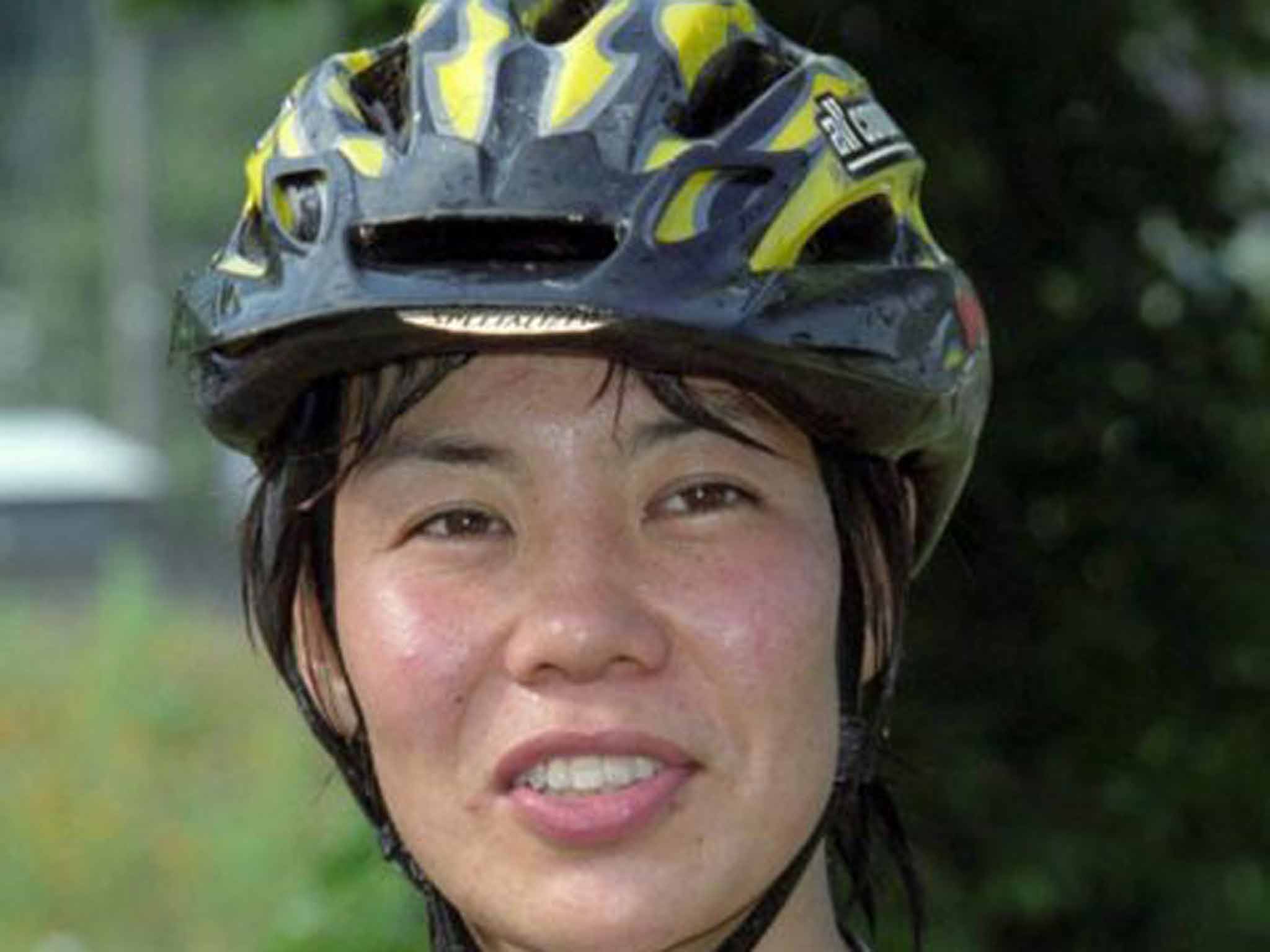Kei Taniguch: Mountaineer who took on the world's toughest peaks and became the first woman to win a Piolet d'Or
She once mused that her short stature had set her climbing, in order to obtain “a commanding view above anyone else”.

Your support helps us to tell the story
From reproductive rights to climate change to Big Tech, The Independent is on the ground when the story is developing. Whether it's investigating the financials of Elon Musk's pro-Trump PAC or producing our latest documentary, 'The A Word', which shines a light on the American women fighting for reproductive rights, we know how important it is to parse out the facts from the messaging.
At such a critical moment in US history, we need reporters on the ground. Your donation allows us to keep sending journalists to speak to both sides of the story.
The Independent is trusted by Americans across the entire political spectrum. And unlike many other quality news outlets, we choose not to lock Americans out of our reporting and analysis with paywalls. We believe quality journalism should be available to everyone, paid for by those who can afford it.
Your support makes all the difference.The summits visible across vast distances from the highest Himalayan peaks fascinated Kei Taniguchi. From the pinnacle of her 2008 conquest, the virgin south-east face of Kamet in the Garhwal region of Uttarakhand, at 7756m (25,446ft) the third-highest mountain in India, she recalls seeing Kailash in Tibet – the distinctive mountain, more than 100 miles away to the east, that several faiths hold sacred.
When, three years later, she travelled close to Kailash and climbed a neighbouring peak, Naimona'nyi, she thrilled to see in the distance the very face of Kamet that she had ascended.
“In that moment they appeared linked together, as though we had found ourselves back on the same line,” she reflected. The elegance of line, both in her unburdened style of climbing, and in the routes she chose, was central to Taniguchi's thinking. The triumph on Kamet made her the first woman ever to win mountaineering's top prize, the Piolet d'Or, or Golden Ice-Axe, in 2009.
She was to die only six years later, aged 43, when she slipped during a climb on Mount Kurodake, in her native Hokkaido, Japan.
“I love to draw beautiful lines as simply and silently as possible,” she wrote of her climbing philosophy. She called her route up Kamet “Samurai Direct”, and said of it: “The line was obvious, following a sinuous couloir directly to the top: perfect and beautiful.”
She and her male climbing partner, Kazuya Hiraide, made the ascent in pure alpine style, lightly equipped, and moving as fast as possible. They took only a single 600g three-quarter-length sleeping bag, and shared it, lying where possible under a tent on small shelves they chopped out from the ice. One shelf was particularly narrow: “First we lay down both facing to the right, and after two hours we turned over and faced the opposite direction. That night was freezing, under millions of stars.”
It took them six days to get up the 1800m face. The couloir presented them with three especially steep and difficult passages (each known as a “crux”) and had at the top one of mountaineering's greatest hazards, a serac – a glacial ice column that at any moment might collapse without warning.
Despite exhaustion, fear of frostbite and difficulty breathing, they revelled in seeing the curvature of the earth, and the sun bursting at dawn “like yellow fire”.
The couple's partnership had begun in 2004, when they ascended the north-west side of Spantik (7028m), the “Golden Peak”, then scaled the north face of Laila Peak (6096m), both in the Karakoram range near Gilgit, Pakistan. She was then aged 32 and he 25.
In 2005 they climbed a new route up the east ridge of Muztagh Ata (7546m) in Kunlun, China, and found a new way up the north face of Shivling (6543m) in Himachal Pradesh, India. In 2011, as well as ascending Naimona'nyi in Tibet, Taniguchi and Hiraide became the first to climb that mountain's south summit, Naofeng Peak (7422m).
Taniguchi, who climbed Mount Everest in 2007, also did pioneering climbs in Alaska – in 2009 at Wasabi Gully, near Kahiltna Queen, and in 2014 the south and east faces of Mount Dan Beard, as well as “the alpinist's dream”, Peak 11,300. She climbed in Britain in 2009 while attending the British Mountaineering Council's meet at Aviemore in Scotland, and in 2010 in the Susa Valley, in Piedmont, Italy. But she admitted, in an essay published in Alpinist magazine less than a month before her death, “I've learned that I care most about the mountains of Japan.”
She felt the first thrill of climbing as a child when her father took her up a rocky peak near their home in Fukushima Prefecture, Hokkaido. She was to make a career as a freelance instructor, personnel manager, and facilitator for corporate team building, living in Tokyo. She and Hiraide were often seen in Tokyo's Jimbocho district, or in the Yatsugatake mountains on Honshu. In 2014 she accompanied, as technical adviser, a women's student team from the Japanese Alpine Club on an ascent of the virgin Mansail peak (6235m) at Mustang in Nepal, reaching the summit on 29 September.
She once mused that her short stature had set her climbing, in order to obtain “a commanding view above anyone else”. But “these days” she reflected later, “I enter the hills wishing to be accepted by the yama-no-kami, the mountain gods... I ask to return safely, to be given some experience of beauty and to be taught some good way to shape my life.”
Kei Taniguchi, climber: born Hokkaido, Japan 14 July 1972; died Hokkaido, Japan 21 December 2015.
Join our commenting forum
Join thought-provoking conversations, follow other Independent readers and see their replies
Comments